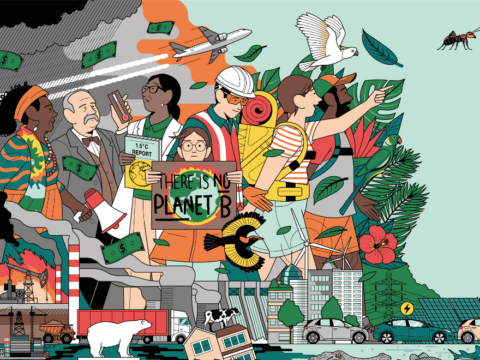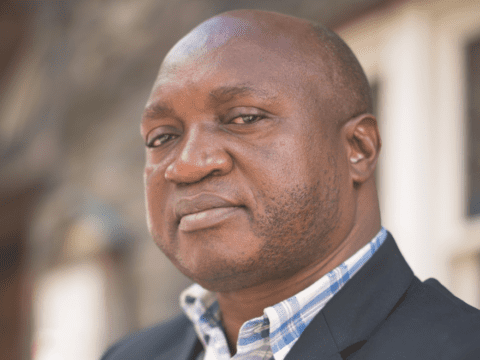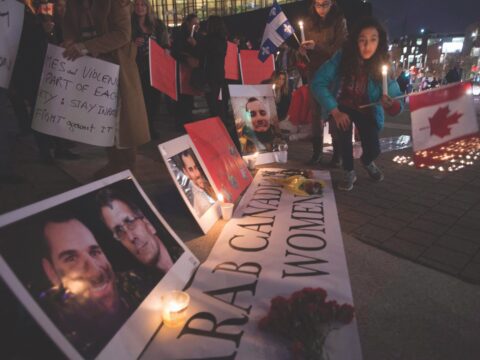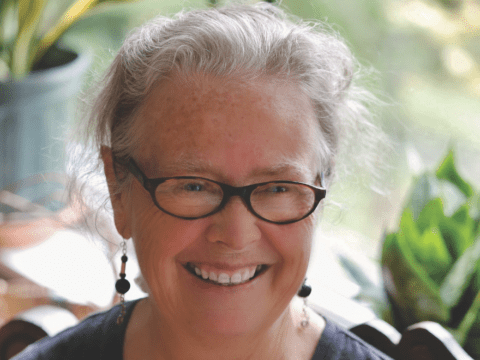On July 3, 2012, Peruvian police opened fire on a public demonstration in the Andean town of Celendin, killing four protesters. José Sánchez was shot in the throat; Eleuterio García in the chest; Faustino Silva in the head. César Medina — the youngest among the dead at only 16 years old — was also shot in the head. Dozens more were seriously injured, and several arrested without cause.
They were among 3,000 people rallying against the Minas Conga, a proposed gold mine that threatens to contaminate their community’s water supply.
The government immediately called a state of emergency in Celendin and two other provinces, suspending civil liberties and mobilizing riot police and soldiers to the region. But the very next morning, police and soldiers again fired at unarmed anti-Conga demonstrators in the nearby town of Bambamarca, this time killing Joselito Vásquez, 26, and injuring and arresting several others.
News of the violence sparked indignation in Peru and abroad. Amnesty International and Human Rights Watch, along with a host of other human rights groups, condemned the brutality, calling for a thorough investigation.
The soaring price of gold over the past several years has sparked a surge in mining in Peru and elsewhere in the developing world. Mining activity has been linked to water shortages, the contamination of lakes, rivers and land, and the loss of fragile ecosystems.
It has been connected to a spike in human rights violations: those who speak out against the mines in their own backyards too often face unlawful imprisonment, eviction, threats, violence and even death. Thanks to a growing global movement made up of Indigenous communities, human rights advocates, independent journalists, church leaders and other concerned citizens, mining-related abuses are beginning to face international scrutiny.
In a February report, the Peruvian government’s ombudsman office counted 147 ongoing socio-environmental conflicts across the country and cited mining as the leading cause. And yet, Peru’s mineral wealth and mining-friendly laws continue to make this Andean nation a top destination for international mining corporations — many of them Canadian.
Nearly three-quarters of the world’s mining companies are registered in Canada, and about half of the world’s mining capital is raised in this country. Most Canadian citizens are unaware that they, too, profit from foreign gold mines. The Canada Pension Plan and several public and private pension funds — including The United Church of Canada’s pension fund — own substantial stocks in Canadian mining companies with foreign operations.
“Canadians just don’t realize how widely Canadian mining companies operate,” said Paul Champ, a lawyer for Amnesty International, at a recent court hearing involving Guatemalan citizens who are suing Canada’s HudBay Minerals for alleged wrongdoings in their country. “And when Canadian corporations become complicit in human rights abuses in foreign countries, that will naturally affect the reputation of all Canadians.”
Minas Conga is a proposed $4.8-billion open-pit gold and copper mine in the Cajamarca region of the Peruvian Andes. The project is being promoted by Minera Yanacocha, which is owned and operated by the American Newmont Mining Corporation, the Peruvian Compañia de Minas Buenaventura and the World Bank. Deemed the largest mining investment in Peru’s history, the mine is expected to produce up to 680,000 ounces of gold and 235 million pounds of copper a year over its 19-year lifespan.
The potential for profit is enormous. In addition to the money earned from the mine itself, the Conga site would generate substantial tax revenues for the Peruvian government and, according to Minera Yanacocha’s website, would also create up to 7,000 construction jobs and 1,600 operation jobs.
“No one here [in Cajamarca] denies that the mine will bring economic benefits,” says Milton Sánchez, who leads the environmental campaign in one of the affected communities. “But the questions we need to ask are, economic gains for whom and at what price?”
Conga lies at the heart of an ecologically fragile region covered with marshes and mountain lakes. At approximately 3,700 metres above sea level, these wetlands act as sponges, capturing and storing water during the rainy season, and then releasing it during the dry season.
According to the company’s own environmental impact assessment and several independent studies, the Conga venture would destroy four mountain lakes. Two of the lakes would be drained for mineral extraction, and the other two would be turned into tailings ponds for contaminant-laden mining wastes. The project would adversely affect more than 680 springs.
Once it’s operational, the Conga mine would consume two million cubic metres of water a year, or 228,000 litres per hour. By comparison, a peasant family consumes about 30 litres of water a day.
The Cajamarca region is already suffering from chronic water shortages; Peru is the most water-stressed country in South America. In the city of Cajamarca, municipal water is only available at infrequent intervals during the day.
For its part, Minera Yanacocha says that Conga meets rigorous standards, and it promises to build four water reservoirs to replace the mountain lakes. “Water management practices incorporated in the Environmental Impact Assessment (EIA) were based on more than 10 years of hydrology and engineering studies conducted by respected independent firms,” the company says on its website.
Company representatives did not return repeated calls seeking comment on the project’s long-term impact on the environment and local water supply. In public statements, however, Minera Yanacocha has said that the reservoirs would increase existing water storage capacity, supplying water “to downstream users who currently only have water flowing during the rainy season.”
After the four lakes are emptied, bulldozers and dump trucks will come in to excavate the mountaintops and the surrounding landscape. During this phase, millions of tons of rock will be disturbed, exposing a host of toxic minerals to the environment, including arsenic, cadmium, chromium, lead, manganese, mercury, nickel, selenium, thallium, vanadium and naturally occurring radioactive elements such as uranium, thorium and potassium-40.
To extract the tiny flecks of gold, cyanide solution will be poured over the crushed rock to separate the precious metal from the ore. This process, called cyanide heap leaching, is the cheapest — hence, most profitable — way to retrieve gold. An average large gold mine uses more than 1,900 tons of cyanide each year; a 10th of a gram of cyanide can be lethal.
Internationally respected American hydrologist Robert Moran has independently reviewed the company’s environmental impact assessment and concluded that mine waste from the rock and tailings, as well as the open pits themselves, would remain for centuries after the closure of the mine. Water treatment, he cautions, would be required in perpetuity — long after Minera Yanacocha and associates have packed up and left. Such a mining proposal, he says, would never receive legal approval in most developed countries, including Canada.
In 2012, Peru approved 4,668 mining claims, several of them in Cajamarca. Maps detailing mining activity in the region show that as much as 45 percent of the area is under mining concessions. Canadian companies in the region include Barrick Gold, Iamgold and Vale Exploration.
On the presidential campaign trail, Ollanta Humala promised Cajamarcans that he would put access to clean water ahead of any gold mining project. Upon winning the presidency in 2011, however, Humala stated publicly that mining is a top priority for Peru’s future.
On the same day that police shot and killed Joselito Vásquez, they also arrested former Catholic priest Marco Arana, an outspoken critic of the Conga and other mines — Time Magazine declared him an environmental hero in 2009. Arana was sitting on a bench in Cajamarca’s main square, wearing signs around his neck that read Vida Sí, Oro No! (Life Yes, Gold No!) and Alto a los Abusos! (Stop the Abuses!). As could be seen in a YouTube video, nearly 40 police surrounded him, grabbed him by the neck, punched and kicked him, and forced him into an unmarked vehicle.
When Arana’s lawyers rushed to the police station to secure his release, police on duty greeted the two women with insults and beatings before allowing them access to their client.
According to court documents, two police captains testified under oath that Arana was caught leading a group of 500 protesters who were blocking public roads and disturbing the peace, and that he violently resisted arrest. They accuse him of violating the terms of the state of emergency, which had suspended freedom of association and movement.
“Even under a state of emergency there must be lawful grounds for an arrest, and the prohibition on the ill treatment of detainees remains absolute,” said José Miguel Vivanco, director for the Americas at Human Rights Watch, in response to the incident. A complaint pertaining to Arana’s arrest has been filed with the Inter-American Commission on Human Rights.
I first heard Arana’s story last October while visiting Peru, the country of my birth and childhood. Arana welcomed me into his home, where he shared details about his treatment in detention.
Arana said two male officers repeatedly kicked him in the kidneys and punched him in the jaw, and a female officer slapped him.
“They told me, ‘You’re a terrorist,’” he said, running his fingers across his jaw, for which he was still undergoing physiotherapy. “‘You’re leading a terrorist movement against the [Conga] project, thereby endangering public safety and security.’ When I told them that they were mistaken, their blows came even harder.”
Police gave him breaks, he said. “When they saw that I was bleeding from the nose and mouth, they stopped. They gave me [anti-inflammatories] and painkillers before they resumed their beatings all over again.” Almost eight hours after his arrest, Arana was presented with a document stating the falsified reasons for his detention. Early the next morning, he was released.
According to Arana, only the female officer displayed her name badge. There is no doubt in his mind that his assailants removed their badges in order to avoid accountability. Despite this, Arana has managed to identify them all and has since brought charges against them and their superiors.
Asked whether he fears for his life, Arana remained pensive. “Fear is a natural human feeling,” he told me. “But I ask myself, if this has happened to me, a public figure, just imagine: what is happening to the campesinos who are far from the media’s eye? I’m talking about the poor and marginalized people with little or no education. Those who don’t have lawyers to represent them. What is happening to the anonymous victims in all these stories about injustice?”
During his 20-plus years defending the environment and the rights of mining-affected communities, Arana said this is the first time he’s experienced police violence first-hand. At one point, he and his environmental organization, GRUFIDES, became the target of a campaign of digital surveillance, intimidation, death threats and defamation. “But I had never experienced a flagrant police assault of this sort before,” he told me.
Even with the recent drop in the price of gold, mining activity in Peru and other developing countries shows no sign of letting up. So long as there’s money to be made, there seems to be little political appetite in Canada to protect the rights of Indigenous communities.
In lieu of legislation, the Canadian government has favoured voluntary codes and corporate social responsibility standards to address mining-related offences committed overseas. A private member’s bill (C-300), which would have held the mining industry at least partially accountable for its actions, was defeated in Parliament in 2010.
Canada’s International Development Agency, recently folded into the Department of Foreign Affairs and International Trade, has funded World Vision Canada to assist Barrick Gold in delivering economic development programs for local Peruvians, especially women and youth.
U.S. embassy cables made public by WikiLeaks recorded a meeting of ambassadors and mining representatives from Canada, the United States, the United Kingdom, Australia, Switzerland and South Africa, hosted by Canadian and U.S. diplomats in Lima on Aug. 11, 2005. At that gathering, parties talked about persuading both the Peruvian government and the Catholic Church to relocate teachers, bishops and priests with anti-mining sentiments.
The cables show that diplomats were more concerned with improving the climate for investment in Peru than addressing human rights issues. Two months later, the Canadian government told the Canadian Lutheran World Relief agency that it had to end its funding of GRUFIDES or lose its co-financing support, reported the British peer-reviewed Journal of Human Rights and the Environment.
After visiting Peru in 2007, a United Nations working group investigating the use of private security forces worldwide left little doubt that human rights violations are a serious concern. Without explicitly connecting the alleged violations to mining projects, the group reported it had heard allegations that private security personnel were “involved in a series of actions to intimidate the population, and in particular environmental rights defenders in the Cajamarca region,” including “the deaths of several local individuals and infringements of personal freedom.”
It went on to express concern “that legitimate social protest by communities about use of their lands is portrayed as criminal or terrorist activity and that leaders of such protests are eliminated, accused or intimidated by the use of force.”
Following the results of a perception study, Minera Yanacocha penned a letter to stakeholders last December. “We are not proud of the current state of our relationship with the people of Cajamarca. We want to take this opportunity to acknowledge the mistakes we have made in how we have conducted ourselves and conducted business. Most importantly, we apologize for the distress we have caused and for failing to earn your trust.”
In Peru, the Ecumenical Foundation for Development and Peace (Fedepaz), a longtime partner of The United Church of Canada, provides technical and legal assistance to individuals who defend their land and environment. More than 150 people are currently receiving legal aid through Fedepaz. Each Conga protester faces an average of five criminal charges. Marco Arana alone has 25 pending charges.
Fedepaz and three other human rights groups recently filed a complaint against Peru with the Inter-American Commission on Human Rights, charging the government with human rights violations related to the Conga project and other mining ventures.
David Velazco, a leading human rights lawyer and executive director of Fedepaz, explains: “Under current legislation, people protesting water rights are being falsely charged with terrorism offences. As such, a protester can receive an eight-year jail sentence for blocking a public road.” By contrast, the maximum sentence for a Peruvian convicted of manslaughter is six years. “Peru’s human rights situation is extremely serious, and this case speaks only to a small fraction of that situation,” he says.
All in all, Velazco remains optimistic, grateful to Canadians for any expression of support. “I cannot stress enough the importance of a simple act of solidarity. . . . Every letter of concern addressed to an ambassador, or to a member of Parliament, will make a difference.”
At the Celendin cemetery, four women dressed in black stand before the graves of their loved ones — three husbands and one son, all killed during the anti-Conga protests last July. Faustino Silva’s five-year-old daughter chants aloud: “Daddy — Mommy and I have little white roses, margaritas, lilies and lots of pretty flowers for you.”
“For months, she’s been staring at the sky,” the child’s mother whispers to her companions, “waiting for her father to come into view.” The women glance at the girl and cross themselves.
One of the women breaks the silence: “Conga is a criminal project,” she tells me. “We have the legitimate right to defend our water and our lives.”
***
This story first appeared in The United Church Observer’s June 2013 issue with the title “Standing up to Big Gold.”















